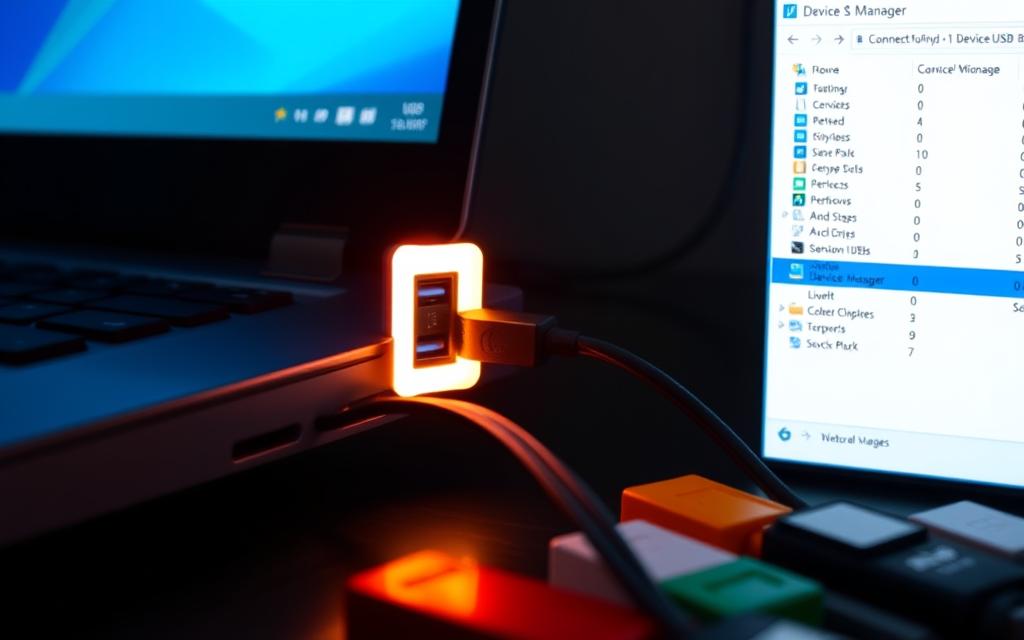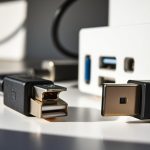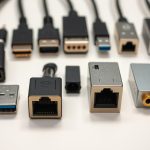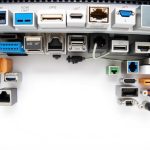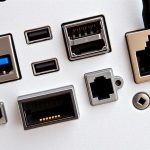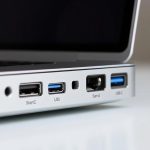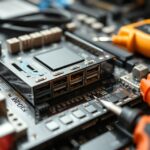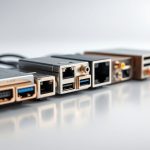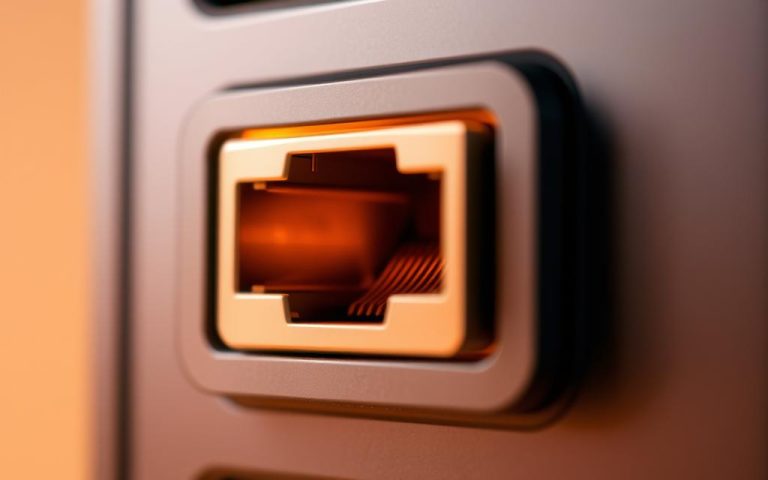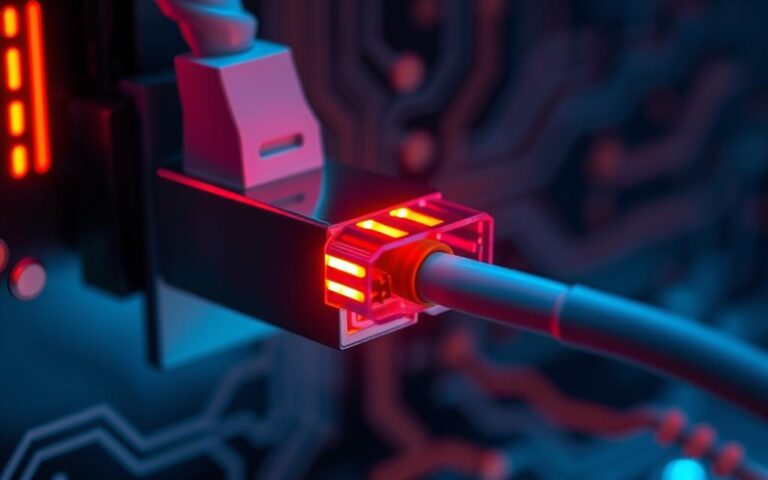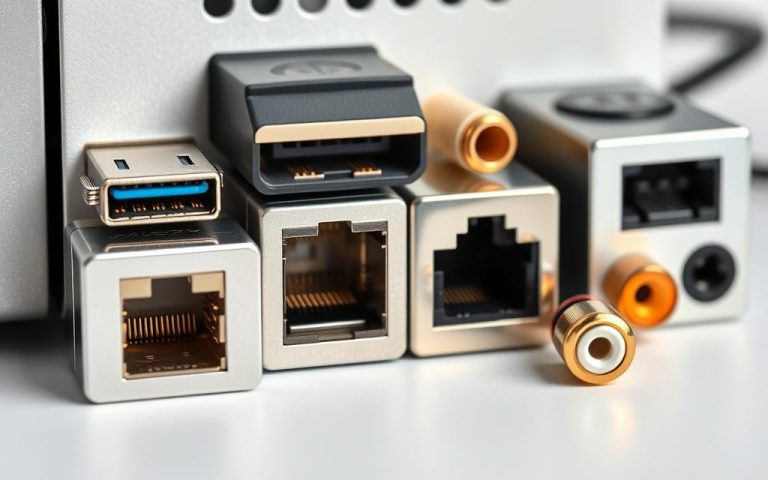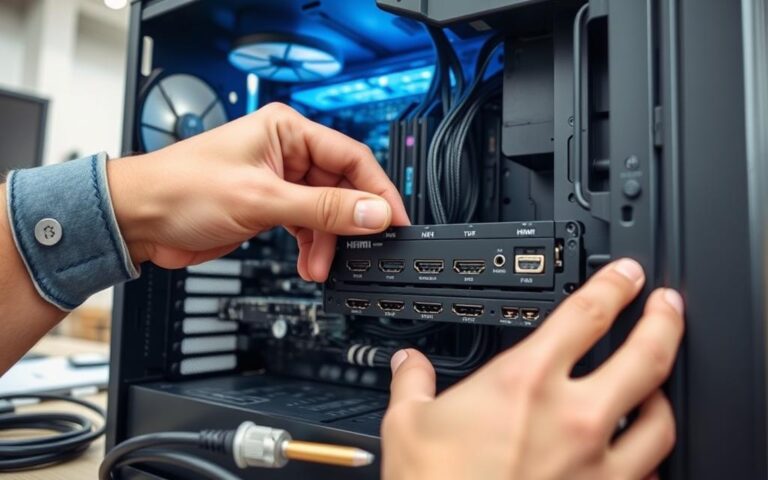How to Check USB Port Status on Your Computer
USB ports are crucial for connecting devices and transferring data on computers. Yet, sometimes devices won’t be recognized, or ports won’t respond. This article will show you how to check USB port status. It will walk you through troubleshooting steps to fix these problems.
Some methods we’ll discuss need administrative rights, especially on networked computers. We’ll cover scanning for hardware changes, rebooting the computer, and resetting USB controllers. If these don’t work, there are more steps to try. You might disable the Selective Suspend feature to make USB ports respond better. For more help, check out this Microsoft support page. It offers detailed advice and research on USB port problems.
Understanding USB Ports and Their Functions
USB ports are vital for connecting computers with various devices. They serve as universal interfaces for data transfer and power supply. Knowing how they work helps solve connection problems quickly.
What are USB Ports?
USB ports connect different devices to your computer. They started in 1996 and have improved over time. Each new version offers faster data transfers and better performance. Key updates include:
| USB Version | Year Introduced | Max Data Transfer Rate | Connector Types |
|---|---|---|---|
| USB 1.0/1.1 | 1996/1998 | 12 Mbps | USB-A, USB-B |
| USB 2.0 | 2000 | 480 Mbps | USB-A, USB-B, Mini-USB B, Micro-USB B |
| USB 3.0 | 2008 | 5 Gbps | USB-A, USB-B, Micro-USB B |
| USB 3.1 | 2013 | 10 Gbps | USB-A, USB-B, USB-C |
| USB 3.2 | 2017 | 20 Gbps | USB-C |
| USB4 | 2019 | 40 Gbps | USB-C |
Common Uses of USB Ports
We use USB ports every day for several tasks. They allow us to:
- Connect keyboards, mice, and printers
- Move data with external storage devices like flash drives and hard drives
- Charge phones and other gadgets
These ports are crucial for our daily technical needs. Making sure they work well is important for smooth operation.
Signs of USB Port Issues
Stay alert for signs of USB port problems. Issues to watch for include:
- Devices not being recognized
- Error prompts from the system
- Needing to plug in devices multiple times
Physical signs like a loose port or dirt can also hint at problems. These affect how well the port works.
How do I check the USB ports on my computer
To ensure your devices connect properly, checking USB ports is key. Start by figuring out if the problem is the port or the device. A methodical approach helps solve diagnosing USB issues more efficiently.
Identifying the Problem
Firstly, try USB port detection. Plug the device into different USB ports on your computer. If it doesn’t work in any port, the device might be the issue. If it only fails in one port, that port needs checking. This is an important first step in troubleshooting.
Testing with Different Devices
Next, test USB devices with various ports. Use multiple devices to see if they connect properly to each port. If a device connects well in all ports, the ports are likely fine. This process confirms if the original device is faulty.
Checking for Visual Damage
Then, take a close look at the inspecting USB ports for any damage or dirt. Dust can block connectivity and cause devices to overheat. If ports look damaged, they might need a professional to check them. Using compressed air to clean the ports can fix some issues.
For more details on handling USB ports, see the complete guide on USB port detection. It explains about different USB ports and where to find them on devices.
| USB Port Type | Common Devices | Data Transfer Speed |
|---|---|---|
| USB-A | Keyboards, Mice, USB Flash Drives | Up to 480 Mbps |
| USB-B | Printers, Scanners | Up to 480 Mbps |
| Micro USB | Mobile Phones, Tablets | Up to 480 Mbps |
| USB Type-C | External SSDs, Laptops | Up to 10 Gbps |
Using Device Manager to Check USB Port Status
Device Manager helps manage USB devices in Windows. It checks for problems with USB ports. By using it, users can check their computer’s USB ports closely.
Accessing Device Manager
Start by right-clicking the Start menu and selecting Device Manager. This opens a window showing all connected devices. Here, users can find and manage USB devices, making it easier to fix issues.
Scanning for Hardware Changes
If USB devices aren’t working, you can scan for hardware changes in Device Manager. This scan makes the system check all connected hardware again. After scanning, users should look at the USB Host Controllers to check if they’re working right.
Understanding the Device Status
Device Manager lets users see how each device is doing. Right-click a USB device and choose properties for info, including errors. These error codes help fix USB problems efficiently.
Restarting Your Computer as a Troubleshooting Step
Many don’t realise how effective restarting a computer can be when fixing USB problems. It helps refresh the system and solves temporary bugs. Restarting also resets USB connections, offering a quick fix for unresponsive ports.
Why Restarting Can Help
Restarting your computer can solve many USB connection issues. It deals with minor software conflicts blocking USB ports from working properly. Moreover, it makes sure drivers operate smoothly, ensuring devices connect without trouble. A computer restart also applies important software fixes that only work after a reboot.
Steps to Restart Your Computer
Restarting your computer is easy. Just follow these reboot steps to refresh your USB connections:
- Click on the Start menu in the bottom left of your screen.
- Find and click the power icon.
- Then, pick Restart from the menu that appears.
Doing this computer restart process closes all running apps and refreshes your system. It can fix many issues with USB ports, improving how your devices connect.
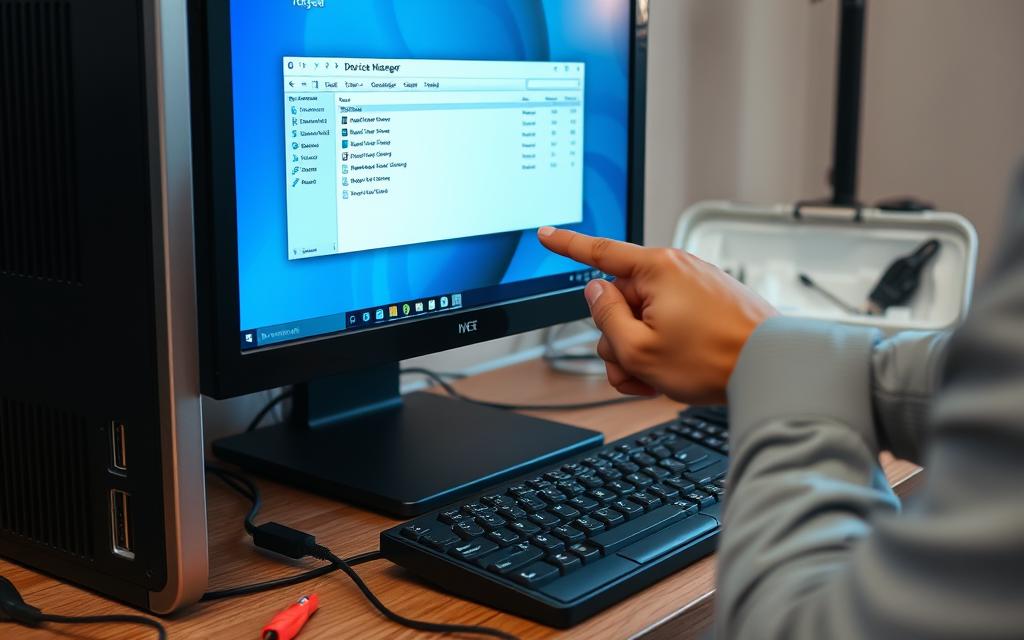
Advanced Troubleshooting with USBView
The USBView Tool is a powerful aid for diagnosing USB issues. It goes beyond basic Windows diagnostics. It gives a clear view of each device that’s connected. Here, we’ll show you how to download, install USBView, and make the most of it.
Downloading and Installing USBView
First off, you need to download USBView. This involves getting the Windows Software Development Kit (SDK). Make sure to choose the Debugging Tools during the setup. After installing, you can open USBView to explore the details of your USB devices.
How to Use USBView Effectively
To troubleshoot USB connections, understanding how to use USBView is crucial. When you start the tool, you’ll see a structured list of devices. This setup helps you go through devices easily. You’ll get to see important info such as error codes and device settings.
Interpreting USBView Data
Interpreting data from USBView reveals a lot about each device’s performance. You can see specifics like device class and functionality. This info is key to solving connection issues. USBView helps identify problems like unrecognized devices, and configuration mistakes.
| USB Version | Power Supply (mA) |
|---|---|
| USB 1.0 | 500 |
| USB 1.1 | 500 |
| USB 2.0 | 500 |
| USB 3.0 (Standard) | 900 |
| USB 3.0 (Charging) | 1500 |
Conclusion
It’s vital to understand and solve USB port problems to keep your devices working well. You have many ways to fix USB port issues. These include using Device Manager, checking for physical damage, and trying tools like USBView. Regular checks can prevent issues, making computing smoother.
Tackling port problems systematically helps you find and fix faults. It also improves device performance for daily use. Taking care of your devices this way helps them last longer and work better. So, staying ahead with maintenance cuts down future problems.
By using these methods, you’ll get better at managing your USB connections. This applies to all types of USBs, from USB 2.0 to the quicker USB 3.2. Knowing how your ports work is key for fast and effective data sharing and device management.
FAQ
What should I do if my computer doesn’t recognise my USB device?
First, try plugging the USB into a different port on your computer. It might work if the first port has problems. Next, test the device on a different computer to see if it’s working there.
How can I clean USB ports to ensure proper functionality?
Use compressed air to blow dust out of USB ports. Be gentle to avoid any damage. If you spot damage, it’s wise to get help from someone who knows about computer hardware.
How do I access Device Manager on my Windows computer?
Right-click on the Start button and pick Device Manager. You’ll see all devices connected to your computer and can adjust USB settings there.
What is the purpose of scanning for hardware changes in Device Manager?
This scan makes your computer check all connected hardware again. It might fix problems by noticing devices it missed before.
Why is it recommended to restart my computer for USB connectivity issues?
Turning your computer off and on again can fix lots of small problems. It helps with USB issues by resetting everything.
What is USBView and how can it help me with USB diagnostics?
USBView shows all USB stuff connected to your PC. It gives detailed info that helps with fixing USB problems.
What are common signs of USB port problems?
Look out for USBs not getting recognized, error messages, needing to plug in a few times before it works, or dirt and looseness in the port.
How can I check if my USB port is physically damaged?
Carefully look at the port for any damage, like bent pins or dirt. Clean it or get help if problems stay.

